theartsdesk in Mozambique: Maputo Stories | reviews, news & interviews
theartsdesk in Mozambique: Maputo Stories
theartsdesk in Mozambique: Maputo Stories
A capital straddled on the line between old and new, Marxism and globalisation
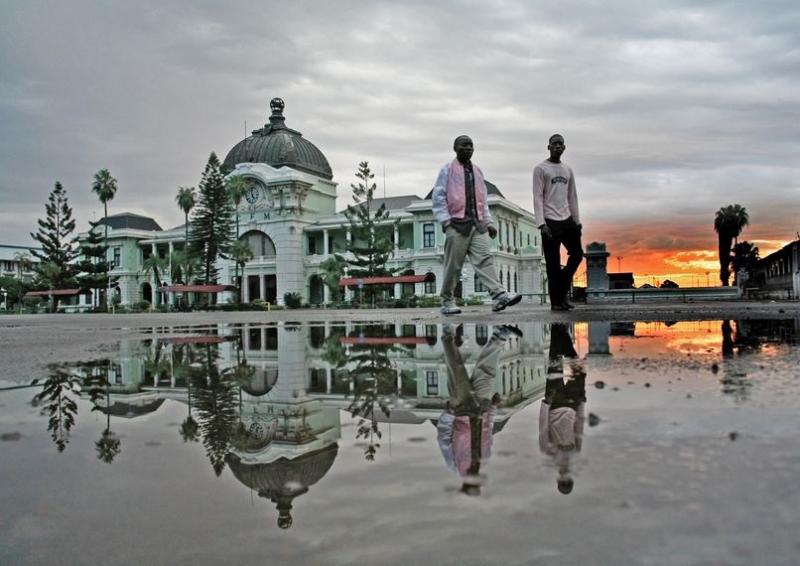
The capital of Mozambique pulls no punches. Parked at the old airport among sheaves of wild grass are old MiG fighter planes, as sculpturally beautiful as the massive monument made from decommissioned weapons a few hundred metres away. The new airport, a multi-million pound effort completed last year with significant Chinese help, has Dom Perignon champagne for $230 a bottle. That’s twice the national annual wage.
Sculptures made from decommissioned weaponry are known as war art. Mozambique’s most famous son is the war artist Gonzalo Mabunda, a sculptor in his thirties who has exhibited in the British Museum in London and Museum of Modern Art in New York. His work includes thrones made completely of bullets, coffee tables of grenades, masks fashioned from AKA-47s. His controversial work is uncomfortable, and questions the role of war.
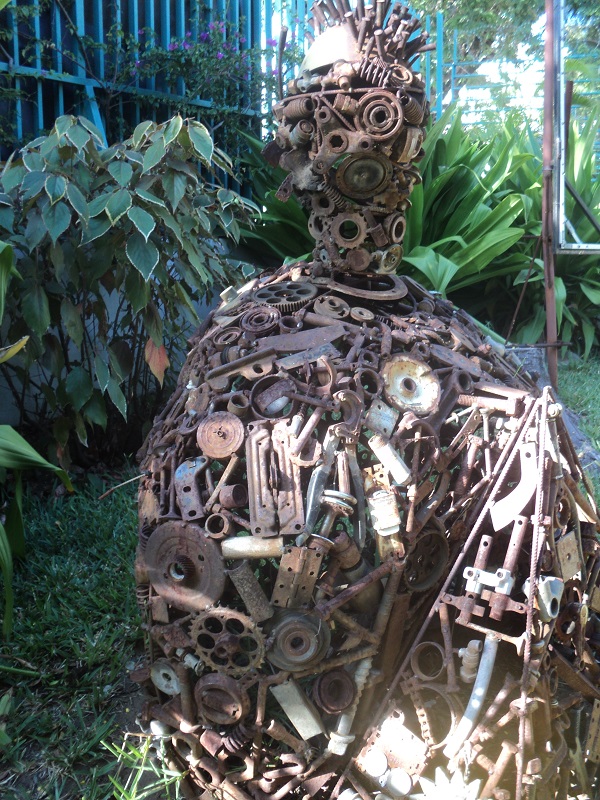
Maputo is characterised by imaginative fantasies, migrations, exile, desperation, contradictions. Emerging out of a 17-year civil war in 1992, Mozambique has the fastest growth rate in Africa, and is set to boom as Australian, Brazilians, Norwegian, Arab, Chinese, English and American offshore mining companies start work, and predict it will become the largest oil producer in Africa by 2017. The country has a largely rural population of 24 million, who are ranked as the second-poorest in the world after DRC Congo and Niger. Maputo was not bombed during the war (and, bizarrely, just about functioned as a city) and much of it remains a museum to a forgotten time: typefaces and signs from the Sixties, residential buildings that flaunt their modernist credentials. The shadow of the war is strong. For those born during and after it, there is a rapacious need for progress, for creative expression and to be on the map. A city by the sea, since the first invasion by the Portuguese over 500 years ago it has been a key commercial and transit centre, including for slavery. Recently, the majestic Maputo station – the western end of a railway line traversing Africa - was a set for the film Blood Diamonds starring Leonardo Di Caprio.
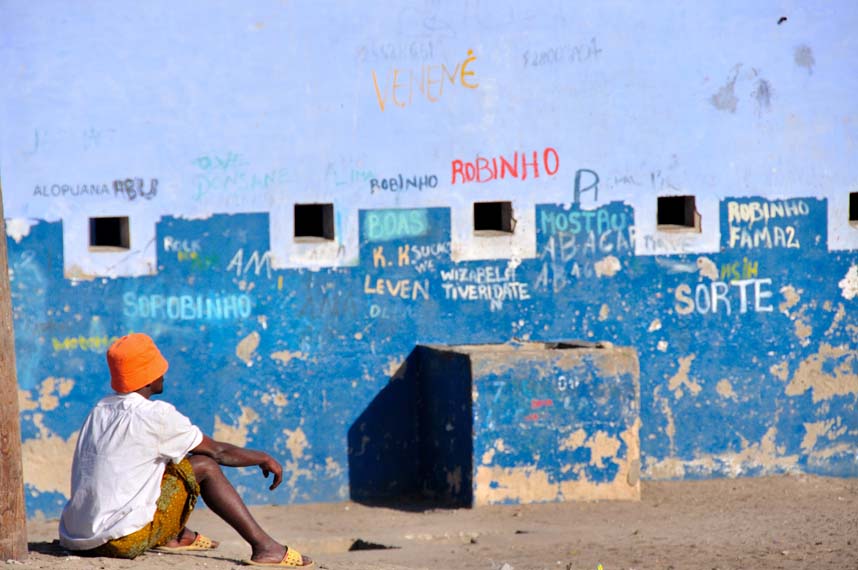 Now, in 2013, the song and rhythm of the city continues. In May 2013 the Mozambiquan author Mia Couto won the prestigious international Camoes prize for literature, honouring the work of Portuguese writers. His 25 books have been translated into 20 languages. Yet most of Mozambique’s considerable artistic, architectural and cultural treasures are unknown. As the country lurches towards modernity, her artists and cultural producers are monitoring the very rapid changes of culture and tradition.
Now, in 2013, the song and rhythm of the city continues. In May 2013 the Mozambiquan author Mia Couto won the prestigious international Camoes prize for literature, honouring the work of Portuguese writers. His 25 books have been translated into 20 languages. Yet most of Mozambique’s considerable artistic, architectural and cultural treasures are unknown. As the country lurches towards modernity, her artists and cultural producers are monitoring the very rapid changes of culture and tradition.
Solange Dos Santos is one of these younger, newer artists. A dynamic female photographer, she returned from the Diaspora four years ago, and has just opened up the new, and first, photography studio/space in Maputo. “I left in 1996, so coming back now is amazing. So much has changed. It’s buzzy, alive, more liberal, accepting, I love this about Mozambique, it’s very tolerant, very forward-looking. The infrastructure is way more developed, the nightlife is buzzing, culture, there’s films, arts concerts in the park, dancing, theatre, live music every night. It’s so friendly! There’s something in the air that makes you want to experiment, give it your best. Here you’re allowed to, completely.”
Solange’s pioneering photographic project with the Swedish government agency SIDA showed albinos in completely new ways and toured Africa and New York. This year her project showcases her determination to showcase Mozambique’s extremely liberal attitudes to gays, lesbians, transgenders and transsexuals – a creative, tolerant side to East Africa rarely in the press.
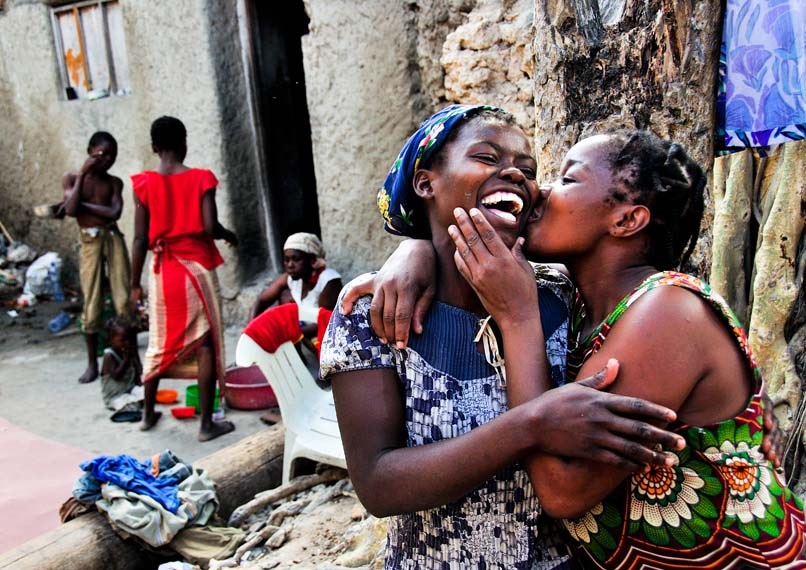
Maputo’s bars, cafes, live music joints, art galleries cum-bars, fusion spots, playfully defy categories. They seem in keeping with a country that has not one, but two, practising human rights lawyers who work as rapper MCs at the weekend. Rather like Havana, every corner, room, cinema and hair salon is twitching with some form of live music, most of it only starting at midnight. Maputo seems irrepressible, with its roots at the port, where a reconstruction of the 19th-century bastion now houses colonial statues: Portuguese generals on horses, with graceful avoidance of their subsequent suicides, or their roles as systematic eliminators of Mozambiquan populations. The capital’s street names betray the ideological DNA of the Cold War - Ho Chi Minh, Kim Il Sun, Vladimir Lenin, Joseph Stalin, Kenneth Kaunda, Julius Nyrere are all immortalised in re-named Avenidas, Ruas and Calles.

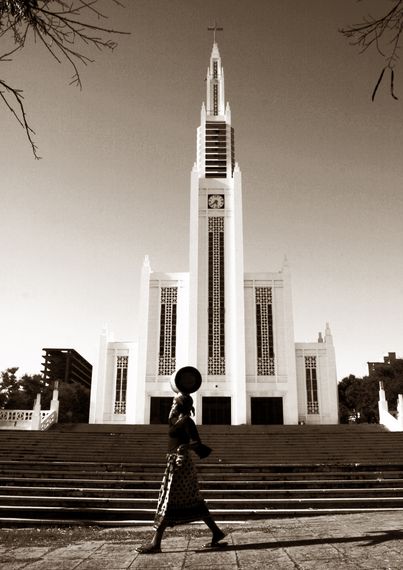 The pull between old and new, global and local, is endless in Maputo. From the earliest building - a 12th-century mosque in the Baixa (downtown) area that has never shucked off the smell of vice - to the vigorous Picasso-esque murals of Najib and Malangatanga (Maputo’s prodigal artist sons), the tension is palpable. The 1960s and 1970s photographs by Maputo native Ricardo Rangel show the Baixa portside area brimming with casinos, twirling neon signs, strip joints and drunks. Rangel, the doyen of Mozambiquan documentary photography, and founder of the Centro de Formação Fotográfica (CFF), elevated the port backdrop to a theatrical setting in his book Our Nightly Bread, simultaneously conveying the dignity and destruction of people caught in sleazy lives.
The pull between old and new, global and local, is endless in Maputo. From the earliest building - a 12th-century mosque in the Baixa (downtown) area that has never shucked off the smell of vice - to the vigorous Picasso-esque murals of Najib and Malangatanga (Maputo’s prodigal artist sons), the tension is palpable. The 1960s and 1970s photographs by Maputo native Ricardo Rangel show the Baixa portside area brimming with casinos, twirling neon signs, strip joints and drunks. Rangel, the doyen of Mozambiquan documentary photography, and founder of the Centro de Formação Fotográfica (CFF), elevated the port backdrop to a theatrical setting in his book Our Nightly Bread, simultaneously conveying the dignity and destruction of people caught in sleazy lives.
Now, in 2013, the Baixa district is still heavy with the scent of transactional sex and heroin. For over 500 years this area has housed brothels, guys hanging out in the street and hotels where you pay for a bed by the hour. Now, predictably perhaps, it is undergoing a renaissance. A private television company, an art workshop and two design spaces have moved in.
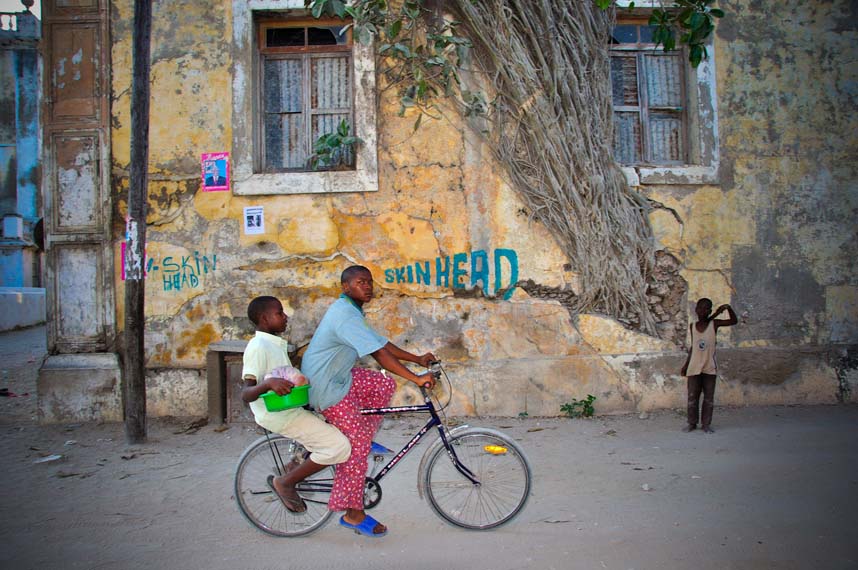 But with progress there are dangers, says Maputenze poet Feling Capela. “We have a lot of bookshops, new bars, design spaces - that’s good. It’s capitalism after the legacy of Marxism. But still we need more promotion of our culture, our poetry, our Marabenta music, the Makua people from Nampula. Anything that isn’t American. As they come here for our minerals and natural gas, we must be sure we don’t sell our history, our culture and identity too. It can’t just be about money…” Feling is from Mafalala, notorious as a cultural melting pot for Mozambique’s many migrational workers, bringing together Swahili fishermen from Zanzibar, boat-builders from southern Tanzania and traders from Zimbabwe, South African and Zambia. It is famous for its female sex workers, as the home of president Samora Machel, and the poets it produced.
But with progress there are dangers, says Maputenze poet Feling Capela. “We have a lot of bookshops, new bars, design spaces - that’s good. It’s capitalism after the legacy of Marxism. But still we need more promotion of our culture, our poetry, our Marabenta music, the Makua people from Nampula. Anything that isn’t American. As they come here for our minerals and natural gas, we must be sure we don’t sell our history, our culture and identity too. It can’t just be about money…” Feling is from Mafalala, notorious as a cultural melting pot for Mozambique’s many migrational workers, bringing together Swahili fishermen from Zanzibar, boat-builders from southern Tanzania and traders from Zimbabwe, South African and Zambia. It is famous for its female sex workers, as the home of president Samora Machel, and the poets it produced.
Dr Luka Mukavelli, ethnomusicologist at Eduardo Mondlane university agrees that the issue of tradition and culture is problematic. He notices new trends as new buildings shoot up in the capital, and wealth floods in: “The gap between traditional forms and what is being consumed is growing. People learn Chinese, English, and are exposed to global musical forms: that’s what is being gained. Now we’re exposed and have access to music to make music. A whole new identity is being processed. A lot of people try to acquire this ‘international’ identity. There’s a whole new ‘global’ culture which is itself an invention, and if we can manage and process this globalisation, we will gain - as long as we reflect, create, think, and not just mimic. Our young people are drawn to this plastic heterogeneous sound, but underneath this is an emotional anger. We must be conscious of this.”
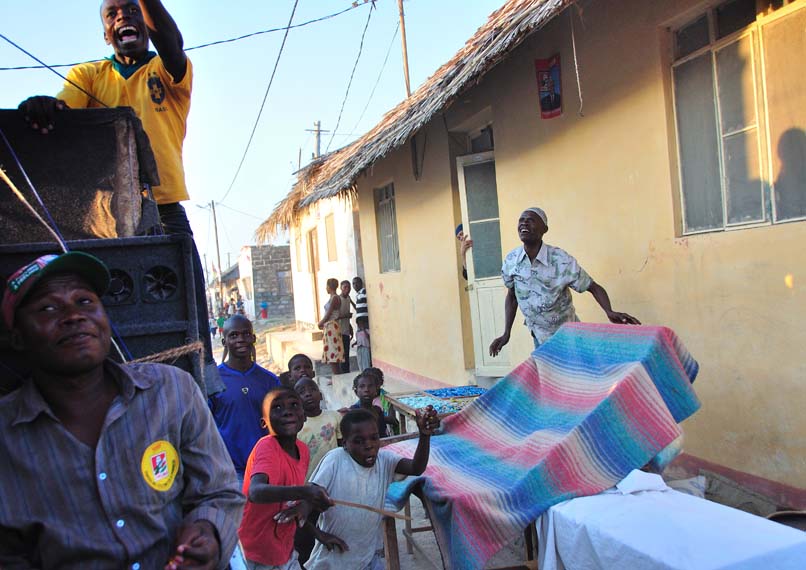 The Eduardo Mondlane university where Mukavelli works is named after leader of FRELIMO, the Socialist Revolutionary Group that finally overthrew the brutal Portuguese regime (under Salazar) in 1974. He was assassinated in 1969 in Tanzania. Mondlane’s daughter Chude Mondlane is an internationally acclaimed musician, a dancer who trained under the close Soviet supervision of the old Marxist Mozambique regime. These days she divides her time between New York and Maputo and has a nuanced take on the emergence of culture in this new Mozambique. “We are certainly more flexible, less doctrinaire than when we were Marxist, in a sense anything goes these days, we can mix up styles, the good, the bad… but we have this dreadful hypocrisy or dishonesty about ‘what is African’. We present this face, and we ignore the bits of African culture, Mozambiquan culture, like wife beating or gender violence, that may be traditional, but they are still unacceptable.”
The Eduardo Mondlane university where Mukavelli works is named after leader of FRELIMO, the Socialist Revolutionary Group that finally overthrew the brutal Portuguese regime (under Salazar) in 1974. He was assassinated in 1969 in Tanzania. Mondlane’s daughter Chude Mondlane is an internationally acclaimed musician, a dancer who trained under the close Soviet supervision of the old Marxist Mozambique regime. These days she divides her time between New York and Maputo and has a nuanced take on the emergence of culture in this new Mozambique. “We are certainly more flexible, less doctrinaire than when we were Marxist, in a sense anything goes these days, we can mix up styles, the good, the bad… but we have this dreadful hypocrisy or dishonesty about ‘what is African’. We present this face, and we ignore the bits of African culture, Mozambiquan culture, like wife beating or gender violence, that may be traditional, but they are still unacceptable.”
In Mafalala, Maputo’s Soweto, the line between black and white is clear: on one side of the big tarmacked road the houses are tin, on the other they are concrete. Black Mozambiquans were forbidden to build in stone or cement (although many did, cladding their houses in corrugated iron as a disguise), a clear sign that Mafalala and its citizens were both transient, and unimportant. Cultural historian Ivan Levanjeira leads walking tours around the muddy, dusty township, pointing out the home of revolutionary leader, Samora Machel, who lived in Mafalala whiet failing to graduate as a doctor in the city’s hospital.
Standing in Mafalala in the midday sun Levanjeira says, “It’s all about context.” He gesticulates to the murals beside us of local poet heroes Naomia De Souza and Jose Craveirinha. “These two were role models, inspirations for us, they defined our racial identity, our struggles and our solutions, as Mozambiquans. They spoke their poetry to people in the street, out loud. Now, on this wall, in this area, they are meaningful, they need to be seen, to be experienced, they don’t need to be in galleries away in the city that no one can afford to get to.”
- Thanks to La Polana Hotel, Southern Sun Hotel and Cardoso Hotel, fixer Phil Baker, cultural envoys and guides Jane Flood and John Marrone, Natalie Tenzer Silva of Dana Tours
Explore topics
Share this article
Add comment
The future of Arts Journalism
You can stop theartsdesk.com closing!
We urgently need financing to survive. Our fundraising drive has thus far raised £49,000 but we need to reach £100,000 or we will be forced to close. Please contribute here: https://gofund.me/c3f6033d
And if you can forward this information to anyone who might assist, we’d be grateful.

Subscribe to theartsdesk.com
Thank you for continuing to read our work on theartsdesk.com. For unlimited access to every article in its entirety, including our archive of more than 15,000 pieces, we're asking for £5 per month or £40 per year. We feel it's a very good deal, and hope you do too.
To take a subscription now simply click here.
And if you're looking for that extra gift for a friend or family member, why not treat them to a theartsdesk.com gift subscription?

Comments
Great stuff. Brilliant that
All absolutely fascinating,
All absolutely fascinating, as John writes, with wonderful photos to complement the writing. More, please, Thembi.